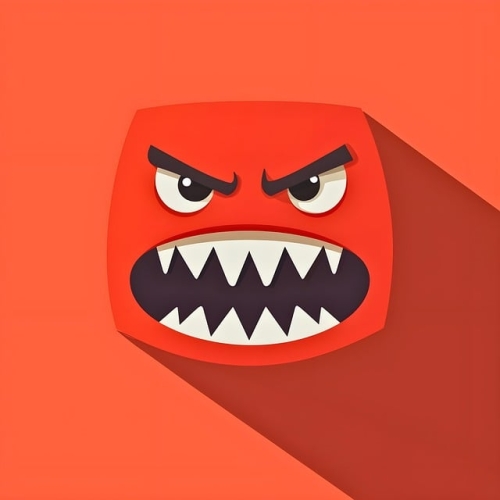
Unveiling the Legacy: Yasuyuki Oda Reflects on 25 Years of Evolution in Deadly Fury Sports
The Deadly Fury fighting game series extends its rich history back to 1991, when SNK Corporation launched Deadly Fury: King of Fighters in arcades. The franchise experienced several iterations throughout the 90s, with Garou: Mark of the Wolves (1999) being the most recent – until now. A quarter-century after the release of Mark of the Wolves, we find ourselves at SNK’s booth during the Tokyo Game Show, eagerly anticipating the arrival of Deadly Fury: City of the Wolves.
It’s indisputable that waiting 25 years for a main installment in a fighting game series is quite extensive, yet possibly it will prove to be worthwhile. After all, we have witnessed the revival of flagship titles from SNK, such as 2019’s Samurai Shodown and 2022’s The King of Fighters 15. This resurgence of previously dormant SNK franchises is spearheaded by Yasuyuki Oda, the producer of both titles, in addition to the forthcoming Deadly Fury: City of the Wolves.
After enjoying the demo, we sat down with Oda to discover more about the new features, character designs, competitive gameplay, and of course, why it took so long to see a new Deadly Fury title.
“I wanted to create [a new Fatal Fury game] earlier but we became occupied with other projects,” Oda explains to GamesIndustry.biz. “Nevertheless, reviving Fatal Fury was always part of the plan; it was just a matter of striking the right moment. After several successful games using other SNK intellectual properties, it felt like the logical next step since it has always been one of the pillars of the company. It’s merely coincidental that it has been over 25 years since the last release.”
Considering the substantial gap between the two releases, there were undoubtedly some obstacles along the way. Oda mentions that their team, SNK Studio 1, has consistently been distant from the core Deadly Fury team members. They also connected with former developers who are now freelancing to assist with the project, effectively reuniting the original team.
However, Oda acknowledges that one of the major challenges was the gap in experience between the veteran Deadly Fury team members and the younger staff, particularly concerning game design and gameplay mechanics.
“A significant amount of time was dedicated to bridging that gap. Throughout that process, both sides learned extensively from one another, which made for a fascinating experience overall.”
Deadly Fury: City of the Wolves showcases visually stunning character designs, akin to vibrant illustrations from a comic book, battling it out on a 2D plane. Oda points out that Deadly Fury games were originally designed to appeal to American comic book sensibilities, and the team decided to incorporate that concept with today’s technology.
Oda also mentions that “the concept of a 3D fighter was never suggested” during discussions about the next Deadly Fury game. The focus was always on “displaying flashy and impressive moves from the side,” which implied that a 3D environment would have conveyed the wrong impression.
Regarding characters, Mark of the Wolves introduced a completely fresh roster of fighters, many of whom had ties to or were students of beloved fighters from earlier installments in the 1991 series and various spin-offs. Terry Bogard, who has represented the series for years, was undoubtedly the most significant returning character from that game.
“Reviving Fatal Fury was always part of the plan; it was just a matter of striking the right moment.”
In City of the Wolves, however, Terry will be joined by fellow legend Mai Shiranui. Fighters from Mark of the Wolves are also making a comeback, including Rock Howard, Kain Heinlein, and B. Jenet. Newcomers Preecha and Vox Reaper also complete the lineup.
Preecha, Oda reveals, is a student of Joe Higashi, one of the series’ most iconic characters introduced in the original game. This is why she bears a strong influence from his muay thai kickboxing style. Vox Reaper’s design, on the other hand, is inspired by his mentor, Grant, who first appeared as a sub-boss in Mark of the Wolves. “That’s why we aimed for him to have an agile and stylish fighting style,” Oda notes.
As for returning characters, Oda mentions that those who play a crucial role in the story are the ones they prioritize first. Specifically, the team focuses on characters whose narrative arcs are still unresolved.
Oda also draws a distinction between The King of Fighters and the Deadly Fury series. “Characters don’t age in The King of Fighters because time doesn’t progress, but they age in Fatal Fury. Just as Terry has aged over ten years since Real Bout 2, the introduction of other characters enriches the world-building.”
Aside from iconic favorites and returning fighters, the biggest surprise is the addition of Chun-Li and Ken from Capcom’s Street Fighter series. This marks the first time that guest characters have been included in SNK’s Deadly Fury games.
Oda explains that introducing guest characters is often a collaborative initiative between companies.
“[Producers and project leads] review [the process] together and oversee each other. We strive to generate ideas that seamlessly fit into the narrative world of each title without compromising the characters’ essence, and we keep in mind any unique expressions associated with each title. It’s not common for us developers to encounter significant conflicts amongst ourselves.”
We also inquire about how Chun-Li and Ken fit into the overarching narrative of the series and if there might be potential for further surprises in the future. Oda, however, remains tight-lipped.
“We’re aiming to keep the story unde
